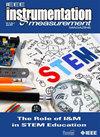Measurement Methodology
IF 1.6
4区 工程技术
Q3 ENGINEERING, ELECTRICAL & ELECTRONIC
引用次数: 0
Abstract
From the onset of the COVID-19 pandemic, many researchers rushed to design Machine Learning (ML)-assisted diagnostic tools that could, supposedly, detect COVID-19 fast and reliably. ML seemed perfect for this job since we had access to many COVID-19 datasets, so a datadriven approach should have quickly yielded such diagnostic tools that could then be distributed to the masses. Unfortunately, the reality fell way short of the expectations. In an extensive study, Wynants and colleagues screened 126,978 relevant titles in the literature and found 412 studies describing 731 such ML-based COVID-19 diagnostic tools, but their conclusion was that “most published prediction model studies were poorly reported and at high risk of bias such that their reported predictive performances are probably optimistic” [1]. Only 29 models had low risk of bias and “should be validated before clinical implementation.” This was confirmed by another study that identified 2,212 such tools, of which 415 were included after initial screening, and 62 were systematically reviewed. The result? “Our review finds that none of the models identified are of potential clinical use due to methodological flaws and/or underlying biases” [2]. There were several problems with the proposed tools, but the one that relates to our article is summarized in the following remedial recommendation of the authors: “When reporting results, it is important to include confidence intervals to reflect the uncertainty in the estimate, especially when training models on the small sample sizes commonly seen with COVID-19 data.”测量方法
从新冠肺炎大流行开始,许多研究人员就急于设计机器学习(ML)辅助诊断工具,据推测,该工具可以快速可靠地检测新冠肺炎。ML似乎非常适合这项工作,因为我们可以访问许多新冠肺炎数据集,因此数据驱动的方法应该很快产生这样的诊断工具,然后可以分发给大众。不幸的是,现实远远达不到预期。在一项广泛的研究中,Wynants及其同事筛选了文献中的126978个相关标题,发现412项研究描述了731种基于ML-的新冠肺炎诊断工具,但他们的结论是,“大多数已发表的预测模型研究报告不足,存在较高的偏倚风险,因此他们报告的预测性能可能是乐观的”[1]。只有29种模型的偏倚风险较低,“应在临床实施前进行验证”。另一项研究证实了这一点,该研究确定了2212种此类工具,其中415种是在初步筛选后纳入的,62种是经过系统审查的。结果如何?“我们的综述发现,由于方法上的缺陷和/或潜在的偏见,所确定的模型都没有潜在的临床用途”[2]。所提出的工具存在几个问题,但与我们文章相关的问题总结在作者的以下补救建议中:“在报告结果时,重要的是包括置信区间,以反映估计中的不确定性,尤其是在对新冠肺炎数据常见的小样本量训练模型时。”
本文章由计算机程序翻译,如有差异,请以英文原文为准。
求助全文
约1分钟内获得全文
求助全文
来源期刊

IEEE Instrumentation & Measurement Magazine
工程技术-工程:电子与电气
CiteScore
4.20
自引率
4.80%
发文量
147
审稿时长
>12 weeks
期刊介绍:
IEEE Instrumentation & Measurement Magazine is a bimonthly publication. It publishes in February, April, June, August, October, and December of each year. The magazine covers a wide variety of topics in instrumentation, measurement, and systems that measure or instrument equipment or other systems. The magazine has the goal of providing readable introductions and overviews of technology in instrumentation and measurement to a wide engineering audience. It does this through articles, tutorials, columns, and departments. Its goal is to cross disciplines to encourage further research and development in instrumentation and measurement.
 求助内容:
求助内容: 应助结果提醒方式:
应助结果提醒方式:


